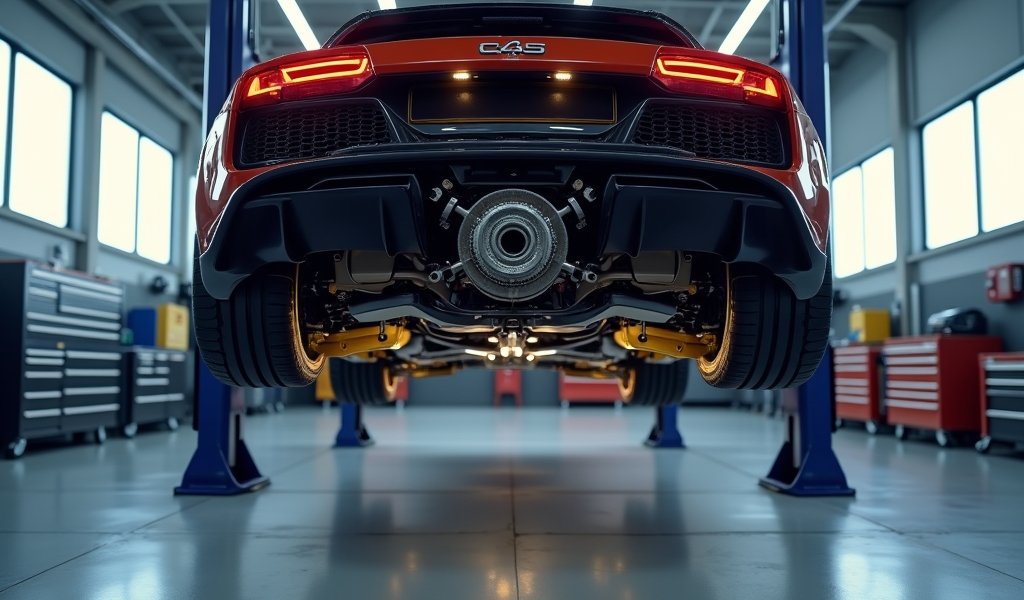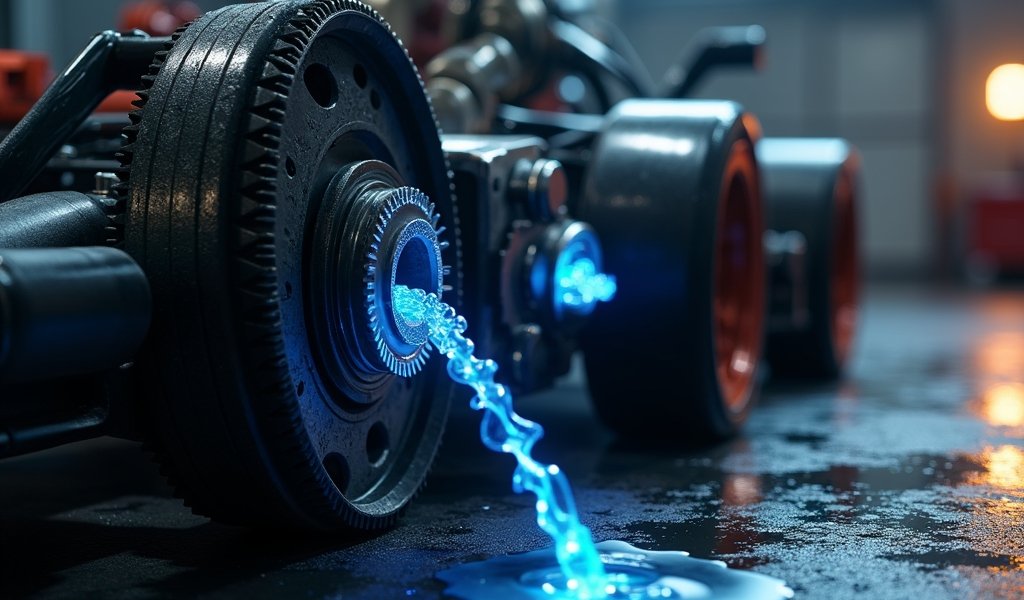Overview
This article explains why limited slip differential (LSD) additives are essential for maintaining proper traction and preventing expensive repairs, highlighting five recommended products including Red Line, Lucas Oil, and manufacturer-specific options like Ford and GM formulations. It provides practical guidance on identifying when additive is needed, proper application techniques, and maintenance schedules while emphasizing that these additives are not optional but necessary components for differential health and performance.
Table of Contents
- Understanding Limited Slip Differentials
- Why LSD Additives Matter
- Top 5 Limited Slip Differential Additives
- Signs You Need an LSD Additive
- How to Choose the Right Additive
- Application Guide: Adding LSD Additives Properly
- Maintenance Schedule for Long-Term Differential Health
- Conclusion
- Frequently Asked Questions
Understanding Limited Slip Differentials
Limited slip differentials (LSDs) are remarkable pieces of engineering that help your vehicle maintain traction when one wheel starts to slip. As a mechanic who’s rebuilt hundreds of differentials over my 20-year career, I can tell you these components deserve more attention than they typically get.
Unlike standard open differentials that send power to the wheel with the least resistance (often the one with no traction), limited slip differentials use clutch packs or special gears to direct power to both wheels, ensuring you maintain forward momentum even when one wheel loses grip.
These sophisticated units rely on special friction modifiers to function properly. When that slick mountain road gets covered in unexpected rain, or when you’re pulling your boat up a wet launch ramp, your limited slip differential is working overtime to keep you moving safely. But it needs the right additive to do its job effectively.
Why LSD Additives Matter
I’ve seen too many drivers come into my shop with damaged differentials simply because they skipped the $15 bottle of limited slip differential additive when changing their gear oil. It’s like putting regular motor oil in a high-performance engine – technically it might work, but you’re asking for trouble.
Standard gear oil lacks the specific friction modifiers needed for the clutch packs in your limited slip differential. Without these modifiers, the clutch surfaces grab and release unpredictably, creating that infamous “chatter” during turns and eventually wearing down expensive components.
The right limited slip differential additive creates the perfect friction coefficient between clutch surfaces, allowing them to engage smoothly when needed and release properly when turning. This prevents premature wear while ensuring optimal power distribution between your drive wheels when traction gets dicey.

Top 5 Limited Slip Differential Additives
After testing dozens of formulations and watching their long-term performance in customer vehicles, here are my top recommendations for keeping your limited slip differential working smoothly:
1. Red Line Oil 80204 Limited Slip Friction Modifier
Red Line consistently proves itself as the gold standard in the shop. This synthetic-based formula eliminates differential chatter immediately and provides outstanding protection against clutch wear. I’ve seen it transform jerky, chattering differentials into smooth operators with a single application.
What sets it apart is its thermal stability – it maintains consistent performance even when your differential gets hot during heavy towing or spirited driving. At around $18 per treatment, it’s worth every penny for the protection it provides to your expensive differential components.
2. Lucas Oil 10009 Transmission Fix
Don’t let the name fool you – this versatile product works wonders in limited slip differentials. Lucas offers exceptional value by addressing multiple issues simultaneously: eliminating chatter, conditioning seals to prevent leaks, and reducing wear.
I’ve recommended this to countless customers with older trucks and SUVs, especially those experiencing minor seepage along with differential noise. For about $12 per bottle, it’s particularly cost-effective for larger vehicles that require more fluid. Lucas has saved many of my customers from expensive transmission repair services by extending differential life.
3. Royal Purple Max-Gear with Limited Slip Additive
Royal Purple takes a different approach by integrating high-performance limited slip additives directly into their exceptional synthetic gear oil. This complete solution eliminates the guesswork of mixing additives.
I particularly recommend Max-Gear for performance vehicles and those used for towing. Its superior film strength protects gears and bearings even under extreme pressure, while its integrated friction modifiers keep clutch packs working smoothly. According to research published by the Society of Automotive Engineers, synthetic formulations like Royal Purple offer up to 27% better wear protection under heavy loads.
4. GM 88900330 Limited-Slip Axle Lubricant Additive
When servicing GM vehicles, this OEM solution provides peace of mind. Engineered specifically for General Motors limited slip differentials, it delivers precisely the friction characteristics their engineers designed into the system.
I always reach for this when working on Chevrolets, GMCs, and Cadillacs. While slightly more expensive than some aftermarket options at about $15 per treatment, it eliminates compatibility concerns and ensures factory-correct performance. For newer vehicles under warranty, using the manufacturer’s specified additive is always the safest approach.
5. Ford Motorcraft XL-3 Friction Modifier
Ford’s Traction-Lok differentials have specific requirements that this OEM formulation addresses perfectly. I’ve found it particularly effective at eliminating the low-speed chatter common in Ford trucks and Mustangs.
At around $12 per treatment, Motorcraft XL-3 represents good value for Ford owners. While aftermarket options may work, nothing matches the compatibility of the product designed specifically for your differential. When combined with Motorcraft gear oil, it creates a complete system that preserves differential performance for tens of thousands of miles.
Signs You Need an LSD Additive
Your differential will tell you when it needs attention, if you know what to listen for. Here are the telltale signs I tell my customers to watch for:
- Chattering or vibration during turns: That distinctive shuddering sensation when turning at low speeds is the most common symptom of a limited slip differential needing additive. It happens because the clutch plates are grabbing and releasing instead of engaging smoothly.
- Reduced traction in slippery conditions: If your vehicle suddenly seems less capable in rain, snow, or loose surfaces, your LSD might not be distributing power effectively due to worn or improperly lubricated clutch packs.
- Noisy differential: While some gear noise is normal, a whining or howling that changes with vehicle speed might indicate inadequate lubrication or worn components that improved fluid and additives could help address.
- Recent gear oil change without additive: If your mechanic recently changed your differential fluid but didn’t add the proper friction modifier, you’ll likely notice symptoms developing within the first few hundred miles.
Even without symptoms, I recommend adding fresh limited slip differential additive whenever you change your gear oil – typically every 30,000-60,000 miles depending on your driving conditions. This preventative approach costs far less than repairing a damaged differential later.
How to Choose the Right Additive
Selecting the best limited slip differential additive isn’t complicated when you know what to consider:
Check Your Owner’s Manual First
Vehicle manufacturers design their differentials for specific friction characteristics. Your owner’s manual (or service manual) will often specify exactly what type and amount of additive to use. Following these recommendations is always your safest bet, especially for newer vehicles still under warranty.
Consider Your Vehicle’s Use
How you drive matters when selecting an additive. For daily drivers, OEM formulations like Ford’s XL-3 or GM’s 88900330 provide reliable, factory-specified performance. For performance vehicles, towing applications, or off-road use, premium synthetic options like Red Line or Royal Purple offer enhanced protection under extreme conditions.
Factor in Your Climate
Extreme temperatures affect differential performance. In very cold regions, synthetic-based additives maintain better low-temperature flow characteristics. For hot climates or applications where your differential runs hot (towing, performance driving), synthetics also offer superior thermal stability.
Consider Cost vs. Value
While premium additives cost more upfront, they often provide better long-term value by extending differential life. I’ve seen firsthand how saving money on car repairs starts with proper maintenance. A $15-20 premium additive that prevents a $2,000 differential rebuild represents exceptional value.

Application Guide: Adding LSD Additives Properly
Adding limited slip differential additive isn’t complicated, but doing it right makes all the difference. Here’s my shop-tested process:
Materials You’ll Need:
- Your chosen limited slip differential additive
- Funnel with flexible extension hose
- Ratchet and socket set
- Torque wrench
- Drain pan (if changing fluid completely)
- Shop rags
- Disposable gloves
Step-by-Step Application:
- Warm up the differential by driving for 15-20 minutes. Warm fluid flows better and helps distribute the additive evenly.
- Locate your fill plug – typically on the side or rear of the differential housing. It’s usually a large bolt requiring a socket or hex key.
- Position your drain pan under the differential if you’re doing a complete fluid change.
- Remove the fill plug first (and drain plug if changing all fluid). This seems counterintuitive, but checking if you can remove the fill plug before draining prevents the nightmare scenario of draining fluid you can’t replace.
- If only adding additive (not changing fluid), use your funnel with flexible hose to add the manufacturer-recommended amount through the fill hole.
- If doing a complete change, refill with the appropriate gear oil first, leaving room for the additive, then add the friction modifier.
- Reinstall the fill plug and torque to specification (typically 20-35 ft-lbs, but check your service manual).
- Drive the vehicle gently for 15-20 miles to circulate the additive throughout the differential.
One of the most common car service mistakes I see is improper additive quantity. More is not better! Too much friction modifier can actually cause clutch slippage and reduced traction. Follow the manufacturer’s recommendations precisely – typically 4-8 ounces per differential, depending on your vehicle.
Maintenance Schedule for Long-Term Differential Health
Based on decades in the shop, here’s the maintenance schedule I recommend to maximize your differential’s lifespan:
Regular Driving (Commuting/Highway):
- Change differential fluid and additive every 30,000-60,000 miles
- Inspect for leaks every oil change
- Listen for unusual noises, especially during turns
Severe Duty (Towing, Off-Road, Performance):
- Change differential fluid and additive every 15,000-30,000 miles
- Consider synthetic fluid and premium additives exclusively
- Inspect for overheating and leaks more frequently
Vehicles that frequently tow heavy loads should consider installing a differential temperature gauge. According to differential specialists at AAMCO, fluid temperatures above 230°F can rapidly break down lubricants and additives, significantly shortening differential life.
Remember that preventative maintenance is always more economical than repair. A typical differential rebuild runs $1,500-2,500 depending on the vehicle, while maintenance fluid and additives cost $50-100 per service.
Conclusion
Your limited slip differential works hard to keep you moving safely through challenging conditions, and it deserves proper care. The right limited slip differential additive is essential insurance against expensive repairs and disappointing performance when you need traction most.
Whether you choose an OEM solution like Ford’s or GM’s additives, or opt for premium formulations like Red Line or Royal Purple, consistent attention to your differential’s needs pays enormous dividends in reliability and performance.
Don’t wait until you hear that dreaded chatter or feel traction problems developing. Be proactive with your differential maintenance, and it will reward you with years of trouble-free service. Remember, in the automotive world, an ounce of prevention is worth a pound of expensive repairs.
For vehicles with limited slip differentials, the right friction modifier isn’t an optional upgrade – it’s an essential component of proper maintenance. Treat your differential right, and it will keep you confidently moving forward when conditions get slippery.
Frequently Asked Questions
What happens if I don’t use LSD additive in my differential?
Without proper limited slip differential additive, your clutch packs can grab and chatter during turns, creating vibration and noise. This eventually leads to premature clutch wear and expensive differential repairs.
Can I use too much limited slip additive?
Yes, excess additive can cause clutch slippage and reduced traction. Always follow manufacturer recommendations for quantity, typically 4-8 ounces per differential.
How often should I add LSD additive to my differential?
Add fresh limited slip differential additive whenever you change your differential fluid, typically every 30,000-60,000 miles for normal driving. Severe duty applications may require service every 15,000-30,000 miles.
Will any limited slip additive work in my vehicle?
While many additives will provide basic function, manufacturer-specific formulations like GM’s 88900330 or Ford’s XL-3 are optimized for their respective differentials. Check your owner’s manual for specific recommendations.
Can limited slip additive fix a differential that’s already making noise?
Fresh additive can often resolve minor chatter if the clutches aren’t severely worn. However, if the noise persists after treatment, your differential likely needs professional inspection and possible repair.

